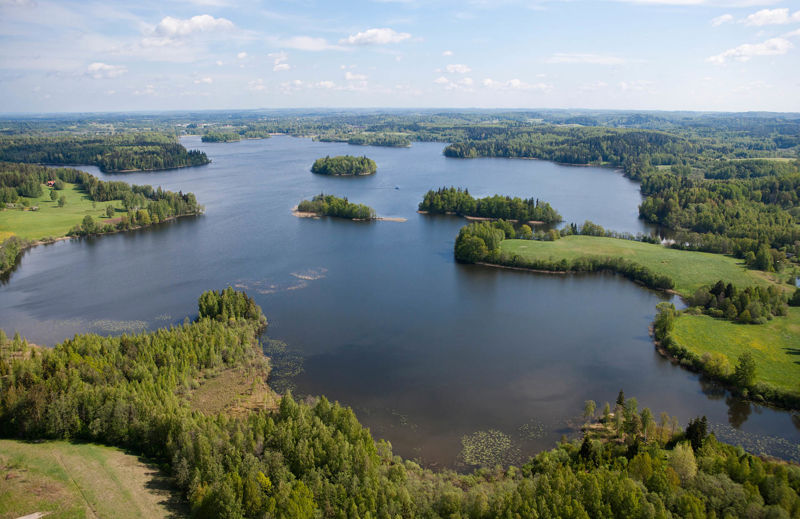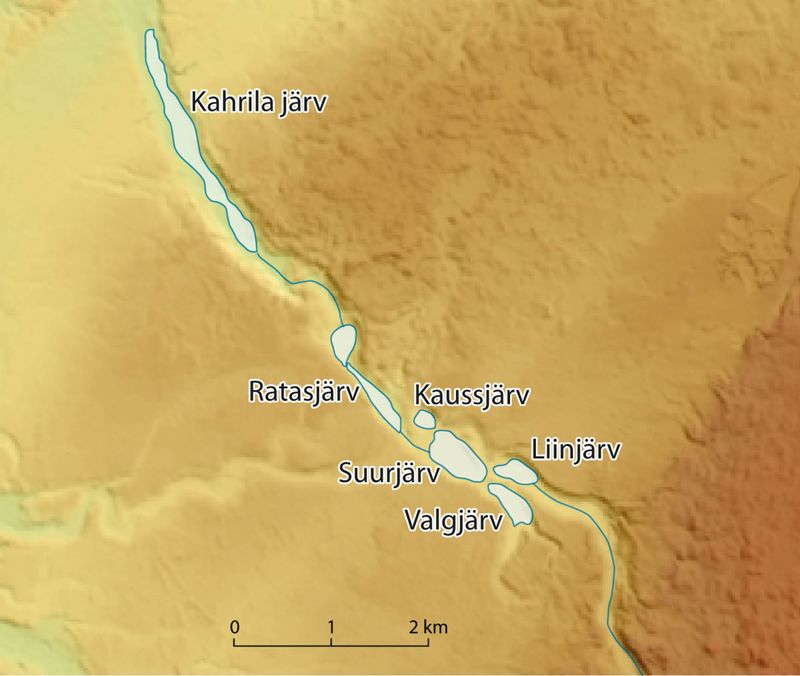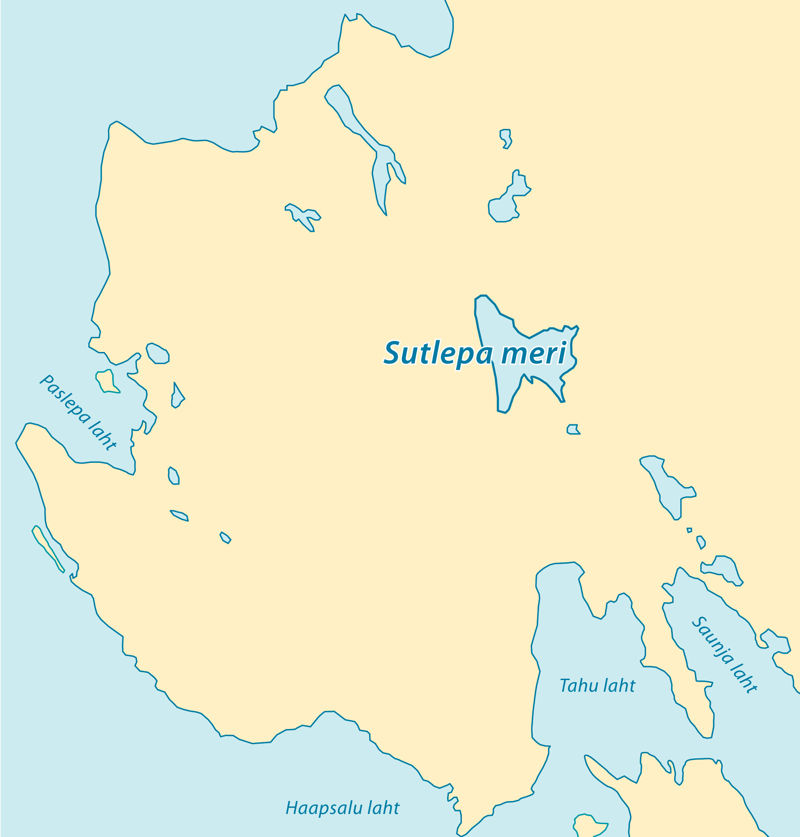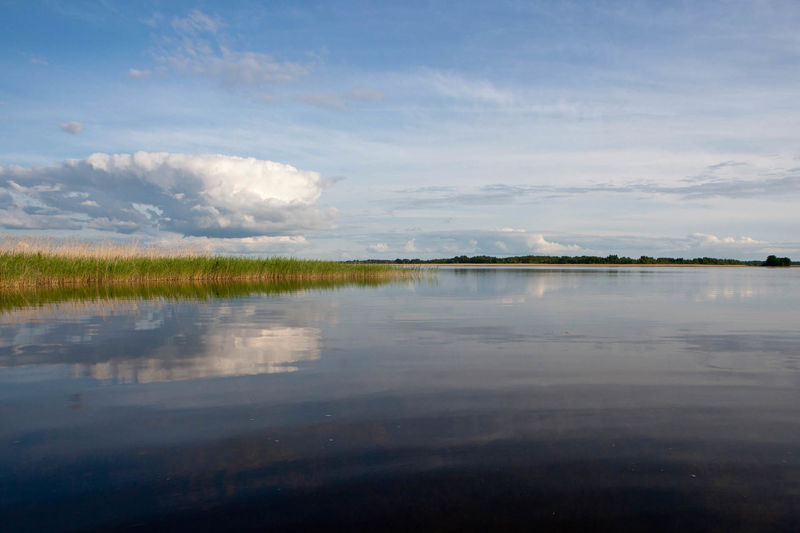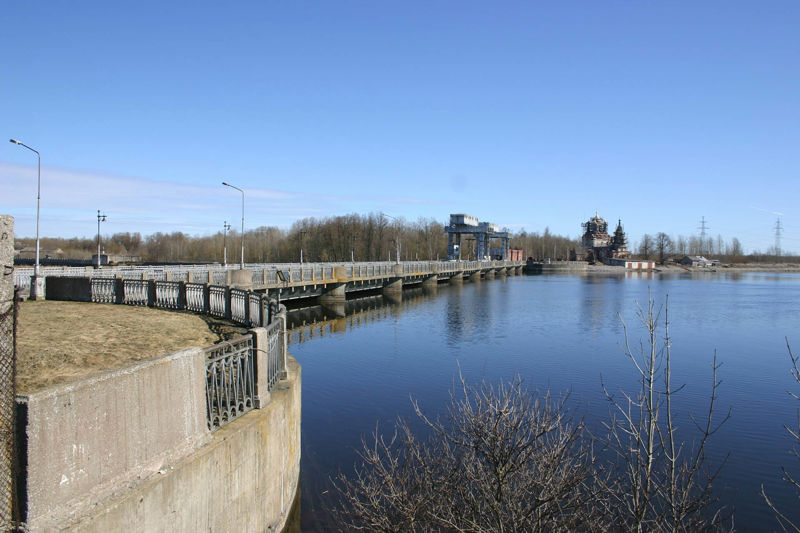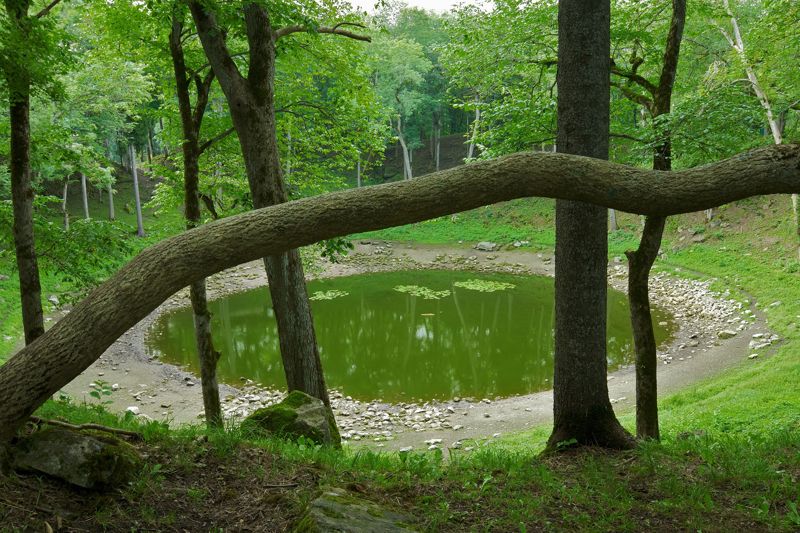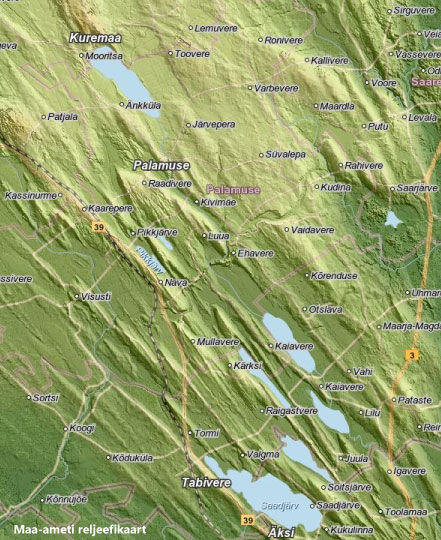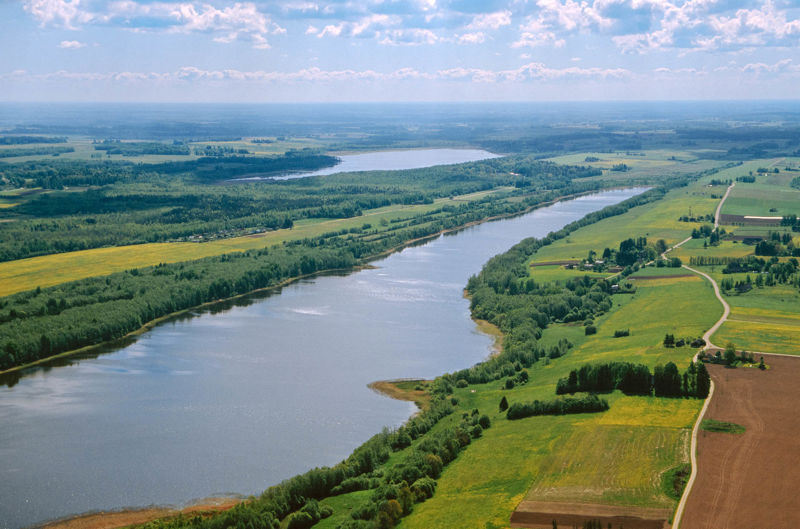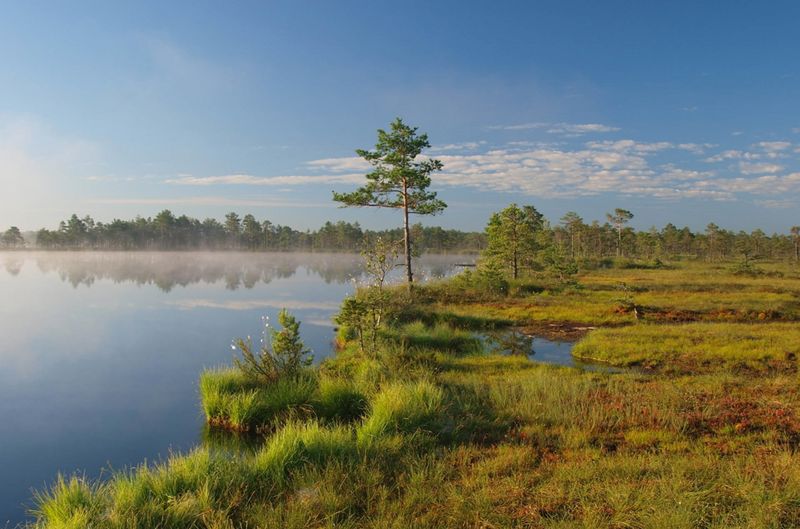The size and shape of a lake is affected by terrain
Most of the lakes in the northern hemisphere are formed by continental ice. Meltwater gathered in the depressions between the hills, which explains why most of the lakes are found in hilly regions. Terrain also affects the size and shape of the lakes. Lakes that are formed in the deep valleys between the steep hills are small, round and deep. Often, there are many small lakes in a row. Lakes that are formed between hills with gentle slopes, on the other hand, are usually larger, shallower, and have a curvy shoreline.
- Highlands have more lakes than plains.
- Terrain affects the size and shape of lakes.
- Lakes that are formed between steep hills are usually shallow.
Not all lakes are formed by continental ice
Only a few thousand years ago, the vast coastal areas in North America and Northern Europe were underwater. However, in many of these regions, the land is gradually rising. This has been going on since the ice age receded, and the huge masses of ice melted and released the ground from the heavy load. Due to the land uplift, the coastal islands grow together with the mainland and become peninsulas, and the bays and straits turn into lakes. At first, salty seawater remains in the lakes separated from the sea. It becomes fresh when the connection with the sea is finally cut off, and the storm waves no longer reach the lake. Shallow and slow-growing coastal lakes, which often have a connection to the sea, are formed this way.
Some lakes, such as reservoirs and ponds, are artificial. A reservoir is a body of water built on a river by constructing a dam. Reservoirs are built to supply towns, agricultural facilities, or hydroelectric power plants with water. An artificial lake can also form when gravel, sand or peat are excavated, and when the excavation stops, the quarry fills with water.
Rarely, a lake can be formed in a meteorite crater. Such lakes are called impact crater lakes, and they are usually shaped like a ring. An example of an impact crater lake is Kaali lake in Estonia. Its basin was formed about 2600 years ago by a meteorite collision with the earth, and it is a unique natural rarity in Europe. The limestone boulders ejected from the ground by the explosion can still be seen in the lake's embankment.
- Some lakes are man-made.
- Coastal lakes are mostly formed as the result of land uplift when the bays got separated from the sea.
- Lake Kaali in Saaremaa is famous all over Europe because it has saltwater.
Lakes in plains and lowlands
Most of the plains have very few lakes because the land is flat, and there are no depressions where water could collect. However, groups of small lakes have emerged in places where large piles of moraine melted from the continental ice have formed elongated hills. The lakes formed between such hills are long and narrow, and often there are several lakes side-by-side.
There are also many small lakes in bogs. Bog and marsh lakes feed only on rainwater. Typical bog lakes are small, with no large aquatic plants, and only a few fish species. The water of the bog and marsh lakes is reddish-brown because it contains substances formed by the decomposition of dead organisms. The bottom of such lakes is usually deep, covered with a thick layer of mud and peat residues.
- Usually there are many lakes in the highlands.
- Usually there are only a few lakes in the highlands.
- There are only a few lakes in the plains.
- There are many lakes in the plains.
- Land uplift causes new lakes to form in the coast.
- There are very few lakes in bogs.
Think!
- Describe the lakes that are formed between the moraine hills.
- Why are there many lakes in some parts of the world, and only a few lakes in others?
Important terms
- artificial lake – a man-made lake
- reservoir – a body of water built on a river by constructing a dam
I now know that…
There are many lakes between the hills in the highlands. Most of the lakes in the northern hemisphere are formed by continental ice. Coastal lakes form from bays that get separated from the sea because of land uplift. Reservoirs are artificial lakes. There are many lakes in bogs.
